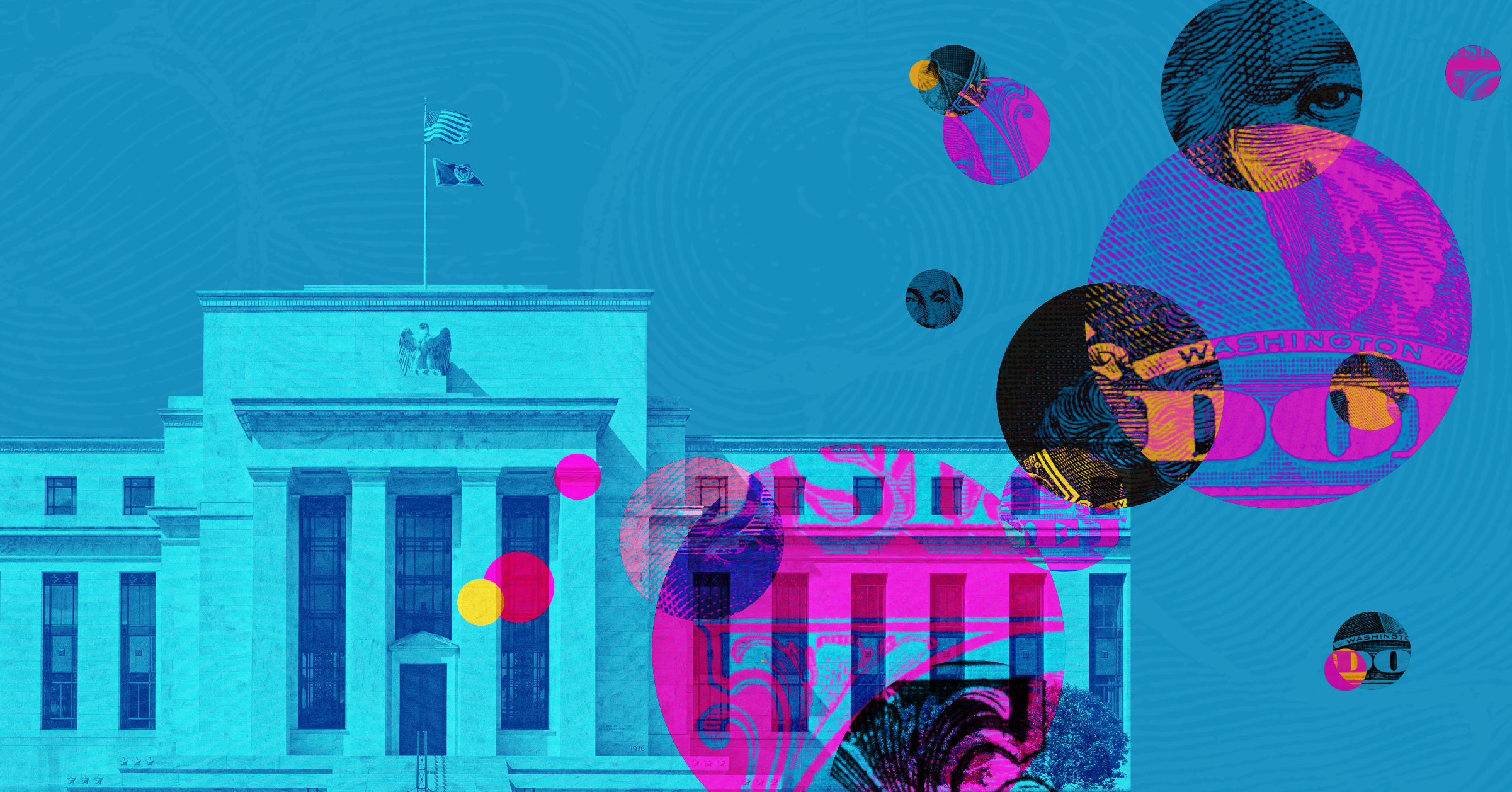Markets Brief: These Stocks Could Thrive Under ‘Higher for Longer’ Interest Rates
Rates hikes are all but over, and cuts are a long way off. Keep an eye on these types of stocks.

In the wake of a week of softening economic data, investors are more confident than ever that the Federal Reserve’s historic rate-hiking cycle has come to an end. That doesn’t mean rate cuts are coming any time soon, however.
In the meantime, the Fed’s target interest rate will remain at its highest level in 15 years. While conventional wisdom holds that high interest rates can weigh on the stock market, strategists say some investments are well-positioned to outperform during an extended Fed pause. These include:
- Dividend growth stocks
- Tech stocks
- Short-duration equities and cyclicals
- Financial stocks
- Emerging-market stocks
Treasury Yield and Federal-Funds Rate
Dividend Growth Stocks
Analysts believe companies that are paying dividends (or, even better, growing them) are good bets for investors during prolonged periods of high interest rates. Critically, these companies can generate enough cash to fund their operations and pay dividends to investors, even in a higher-rate environment or during an economic slowdown. “That’s a sign of strength,” says Michael Arone, chief investment strategist at State Street Global Advisors. “If in fact the economy slows or market returns are a bit lower, more of your total return will come from dividend income.”
He adds that these companies also tend to have lower earnings variability and low debt loads, giving them an advantage over firms that need to borrow more to fund their operations. Even amid economic headwinds, these companies can deliver strong earnings growth and better returns for shareholders, says Josh Jamner, investment strategy analyst at ClearBridge Investments.
Tech Stocks
For the same reason, some of the largest public technology companies—think Apple and Microsoft—could benefit from “higher for longer” rates, according to Arone. Major tech companies need “pristine balance sheets” and “lots of cash on hand,” he explains, noting that when Treasury yields soared last month, tech stocks rallied too.
Short-Duration Equities and Cyclicals
Jamner points to shorter-duration equities—companies with significant cash flows expected in the immediate term, rather than years down the road—as another good bet. With interest rates high, such companies will have to discount their cash flows more than those with more immediate cash. Ultimately, Jamner says, “that shrinks the present value of your company.” That’s part of the reason longer-duration stocks tend to be more sensitive to rate changes, while shorter-duration stocks can more easily withstand them.
Many cyclical stocks, which tend to rise and fall along with expansions and contractions in the economy, are in this category. “There’s much more value associated with such a company in the relative near term as opposed to the long term,” Jamner adds.
Richard Bernstein, CEO and chief investment officer at Richard Bernstein Advisors, likes cyclicals for a different reason. He explains that rising rates mean the economy is stronger than people expected, and “you always want exposure to the companies … that are sensitive to the economy.”
Financials
Arone points to financial stocks as another potential beneficiary of rates that stay higher for longer. Financials have been “beaten down considerably,” he says, and they are very inexpensive yet also highly profitable. An end to the Fed’s rate hikes could lead to a rebound, he argues, since higher rates can help lenders earn more.
That extra revenue could outweigh the costs that also come with higher rates, especially if the economy achieves a soft landing without a major recession. Not to mention the extra clarity that comes with a pause. “All of a sudden, financials don’t look so bad,” Arone says.
Emerging Markets
Despite the general consensus that the United States is headed for an economic slowdown, Bernstein says he expects U.S. growth—and by extension, global growth—to pick up. “The Fed is going to have to react to that stronger-than-expected growth,” he says. “We think it makes sense to have exposure to emerging markets.”
Arone looks back to the 1995 Fed cycle, a rare historical occurrence of a “soft landing,” and notes that emerging equities outperformed after the central bank stopped hiking rates, spurred by a weakening dollar. The dollar was unexpectedly strong in the leadup to that pause, much like it is today. Arone says that given that history, “international investments could benefit from a pause in Fed rate hikes as the dollar falls, particularly given the poor fiscal situation the U.S. finds itself in.”
The author or authors do not own shares in any securities mentioned in this article. Find out about Morningstar’s editorial policies.


/cloudfront-us-east-1.images.arcpublishing.com/morningstar/PKH6NPHLCRBR5DT2RWCY2VOCEQ.png)
/cloudfront-us-east-1.images.arcpublishing.com/morningstar/KD4XZLC72BDERAS3VXD6QM5MUY.png)
/cloudfront-us-east-1.images.arcpublishing.com/morningstar/ZYJVMA34ANHZZDT5KOPPUVFLPE.png)